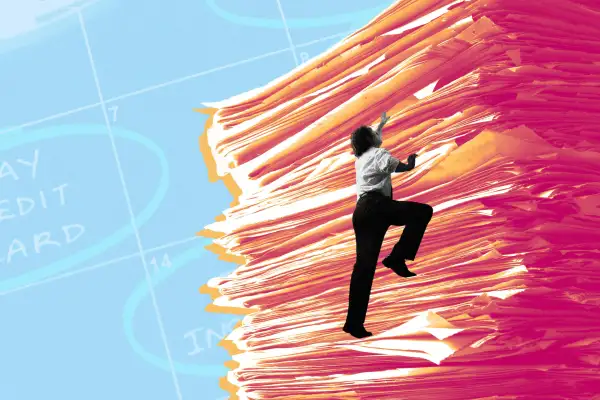Americans Are Increasingly Worried About Missing Monthly Debt Payments

Americans are growing more concerned about missing debt payments and entering delinquency as high prices and interest rates weigh on borrowers.
New survey data from the Federal Reserve Bank of New York showed a decreasing level of confidence among consumers in their ability to make the minimum debt payments for loans and credit cards.
In August, the average perceived probability of missing a payment over the next three months was 13.6%. That was the highest reading in over four years. It’s also an increase from 11.1% a year ago and 13.3% a month ago.
According to a separate release of Federal Reserve data on Tuesday, total consumer debt increased by $25.5 billion month over month, which was the largest increase since November 2022.
Young Americans seem to be in the worst shape as far as keeping up with their debt payments. Here are consumers’ perceived probabilities of missing a payment in the next three months, broken down by age:
- Under 40: 18.51%
- Ages 40 to 60: 15.01%
- Over 60: 8.55%
The survey also found that many people with lower incomes are at risk of missing payments. Among those earning less than $50,000, the perceived chances of missing a payment are nearly 20%, according to the New York Fed.
People earning over $100,000 have a better grip on their debt obligations, with only a 6.4% chance of missing a payment.
Consumers have mixed economic expectations
In addition to looking at debt, the New York Fed's survey takes the pulse of consumer expectations on other topics, including inflation and the job market.
Even though inflation has largely cooled, it’s still on the minds of many Americans. Elevated goods and services prices are challenging budgets — likely part of the reason that consumers are worried about keeping up with their debt payments.
Americans said they expect prices in the economy to rise between 2.5% and 3% annually over the next 1 to 5 years. That’s roughly in line with the current rate of inflation — 2.9% as of July — and would be an improvement from the much-higher rates observed in 2022 through the first half of last year.
Consumers said they expect their earnings to grow at a rate of 2.9% over the next year, but they also expect their household spending to increase 5%.
What to do if you can't afford a minimum debt payment
Borrowers should avoid missing minimum payments at all costs. If you don't pay a loan or a credit card, your credit score will likely take a major hit, and your account could go to collections.
If you're facing a temporary financial hardship, communicate with your lender and see if they can offer you any flexibility to pay at a later time.
Credit card minimum payments are often only $25 to $50 per month. It's crucial to make that payment even if you can't pay your full balance, or else you'll face late fees and hurt your credit.
Personal loans and other lending options could help you afford your payments in a pinch, but taking on more debt is likely not a long-term solution to your problems. Budgeting, growing your income and building up an emergency fund can help you get to a sustainable financial situation.
More from Money:
Best Credit Cards of September 2024
What the Fed's Rate Cut Will Mean for Savers, Investors, Homeowners and More
5 Popular Strategies People Are Using to Escape Credit Card Debt

